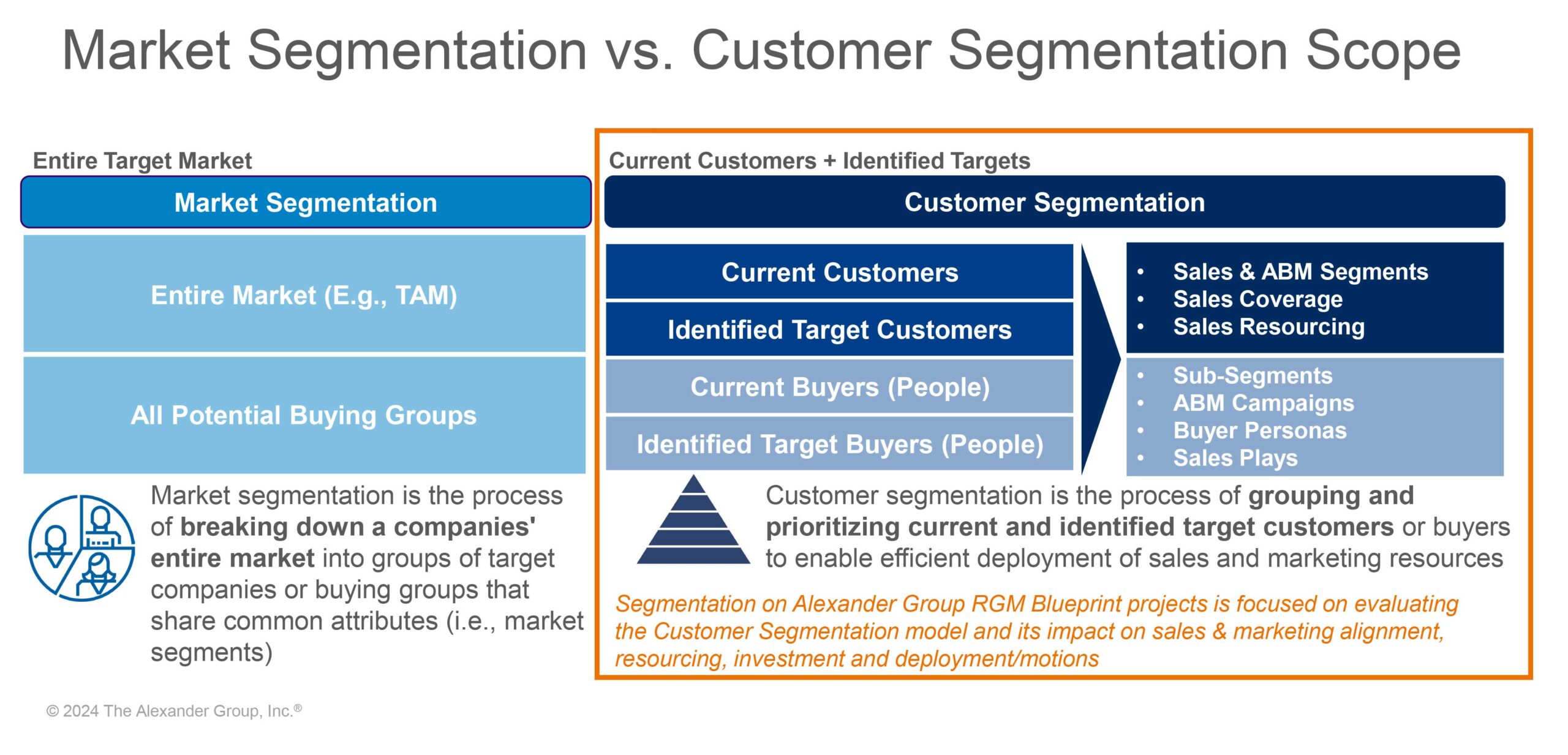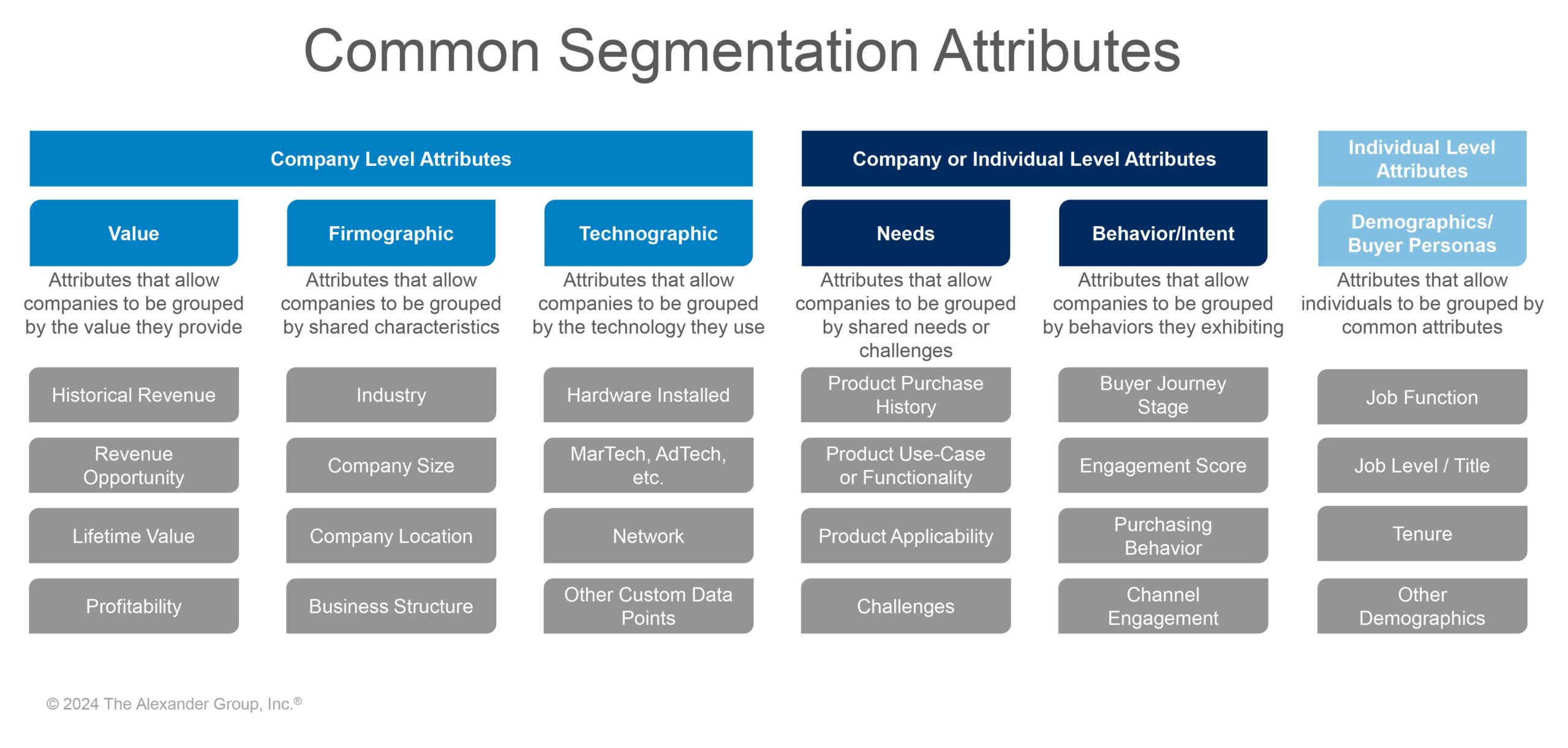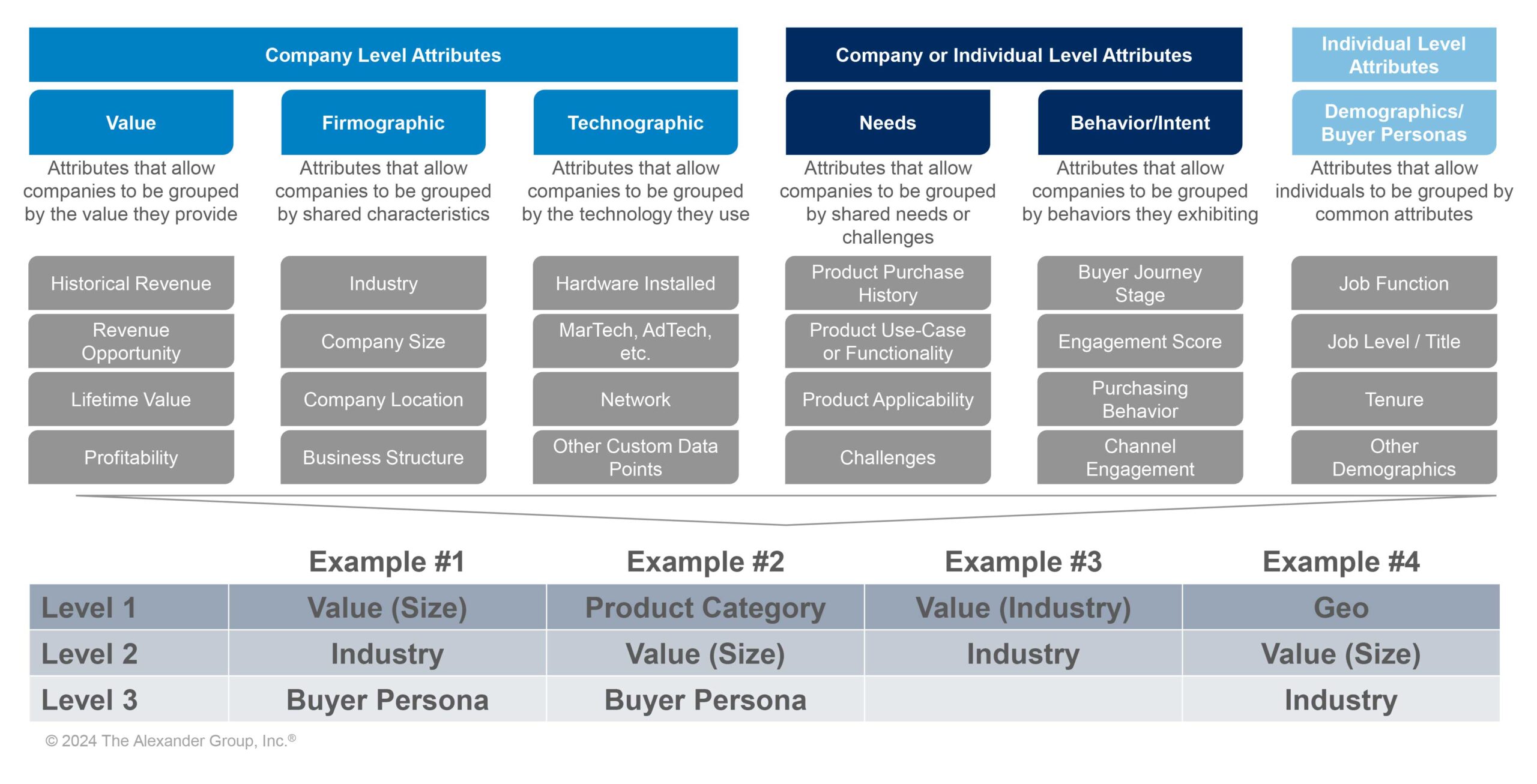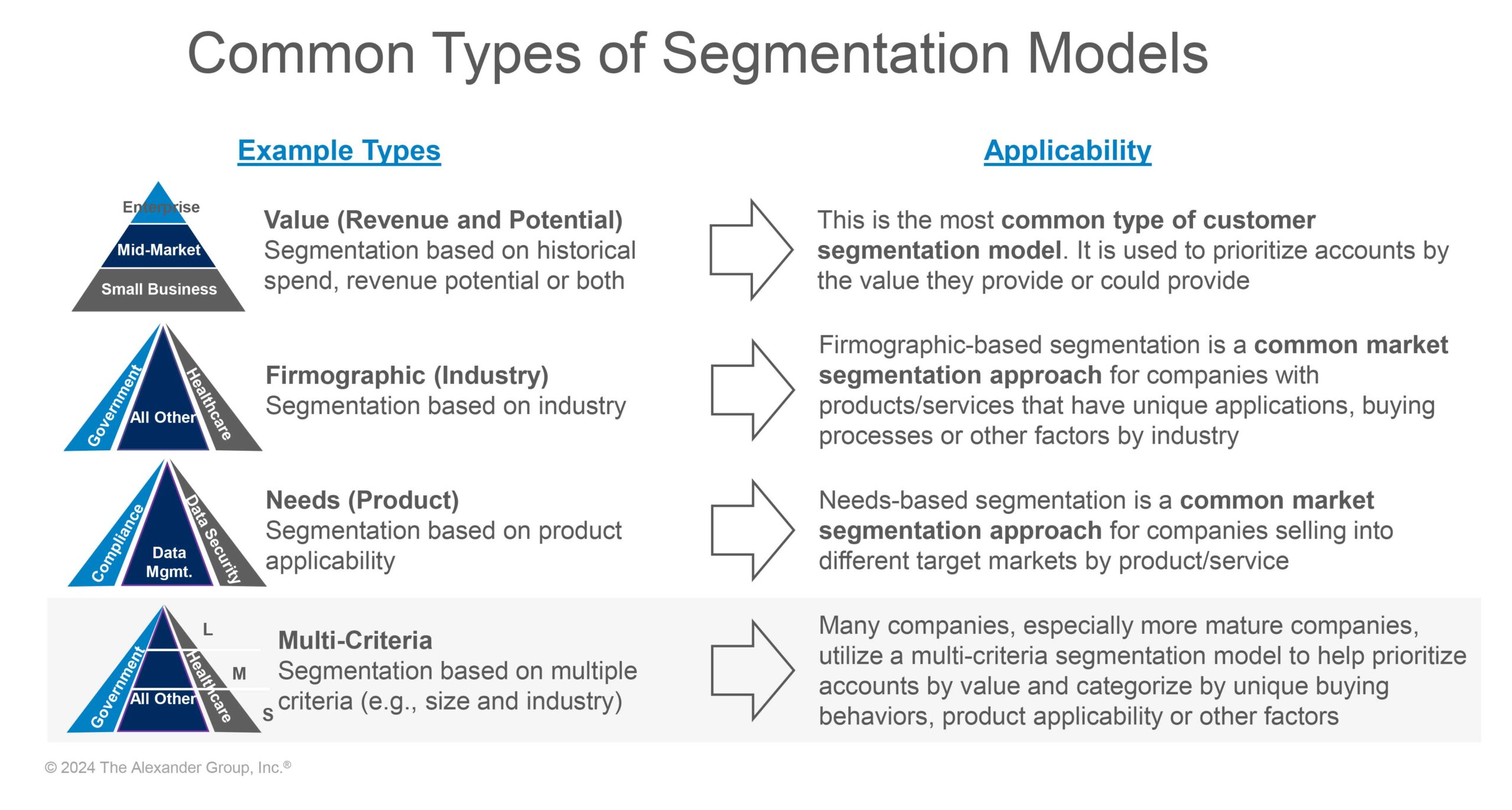
Sales and marketing organizations often utilize both market segmentation and customer segmentation; each have different approaches and use-cases.

In today’s hyper-connected world, effective marketing strategies require precision and personalization. Market segmentation is the key to achieving this, playing a crucial role in the success of B2B companies. By dividing the audience into distinct groups based on shared characteristics, companies can better allocate limited resources more effectively and can create targeted messaging that better resonates with decision-makers. In addition, segmentation allows firms to proactively identify opportunities including untapped markets or intensifying efforts in existing ones, leading to greater growth opportunities.
In this article, we will explore modern marketing segmentation strategies, recent trends that are impacting use cases, and best practices to ultimately drive sales while optimizing marketing costs.
Marketing segmentation remains a critical strategy for effectively reaching and engaging diverse audiences. It helps organizations improve performance by validating that target segments are valuable and worth pursuing.
Firmographics segmentation continues to be a cornerstone of B2B marketing. It involves categorizing businesses based on objective criteria such as industry, company size, location and revenue.
Use case: A software company tailors its messaging differently for small businesses versus large enterprises. By understanding a firm’s size (revenue and number of employees) the software firm can offer its product tiers accordingly.
Needs-based segmentation focuses on understanding customer pain points and requirements. By identifying customers’ needs, the right products or solutions can be offered at the right time, enhancing their experience.
Use case: An IT services provider identifies customer segments with distinct needs—such as cybersecurity solutions for compliance-driven industries or cloud migration services for scalability. Customized content and solutions enhance engagement.
Behavior-based segmentation analyzes how businesses interact with products or services. Factors include purchase history, engagement level and response to marketing efforts.
Use case: An e-commerce platform tracks user behavior‒abandoned carts, frequency of visits, specific product views‒to trigger personalized follow-up emails or targeted promotions. Behavior insights guide lead nurturing.
Customer tiering involves segmenting based on the value each customer brings to the business. High-value accounts receive different treatment than lower tier ones.
Use case: A financial institution prioritizes its top-tier clients for exclusive services, personalized account management and tailored investment advice. Tiering optimizes resource allocation.
Sophistication segmentation considers how well-informed customers are in their industry. It ranges from novices to seasoned experts.
Use case: A marketing consultancy delivers beginner-friendly content (e.g., industry primers) to novices while engaging experts with advanced thought leadership. Relevant content builds credibility.
Extreme segmentation involves fine-grained categorization. It involves diving deeper into customer characteristics beyond demographics, producing a tailored customer experience.
Use case: Spotify classifies music into 5,000 genres, considering mood, energy and even “speechiness” of songs. Spotify’s recommendation engine thrives on extreme segmentation, delivering personalized playlists to millions of users. This sets them apart from competitors like Apple and Amazon.
Outsourcing segmentation tasks is gaining traction. Specialized agencies or data analytics firms provide expertise and tools for effective segmentation. Outsourcing ensures accuracy and efficiency.
Use case: A manufacturer partners with a data analytics firm to analyze customer data, identify segments and develop targeted marketing strategies.
Successful B2B marketing isn’t about casting a wide net‒it’s about casting the right net to catch the most promising fish. B2B marketers who embrace segmentation trends gain a competitive edge. By understanding the audience’s nuances, they can create personalized experiences, and optimize resource allocation. It’s a strategic approach that fuels growth, enhances customer engagement and drives business success.

Sales and marketing organizations often utilize both market segmentation and customer segmentation; each have different approaches and use-cases.

There is no “one size fits all” approach to segmentation. Best-in-class segmentation utilizes attributes that are (1) quantifiable and accessible, (2) correlated to revenue and propensity to buy, (3) aligned to the business and commercial objectives of the organization.

Segmentation Can Have Multiple Levels

There are often multiple layers to segmentation; different types of segmentation models can be merged into a multi-criteria segmentation model OR companies may choose to utilize sub-segmentation.

To learn more, visit Alexander Group’s Customer Segmentation and Targeting or contact an Alexander Group marketing services practice lead.